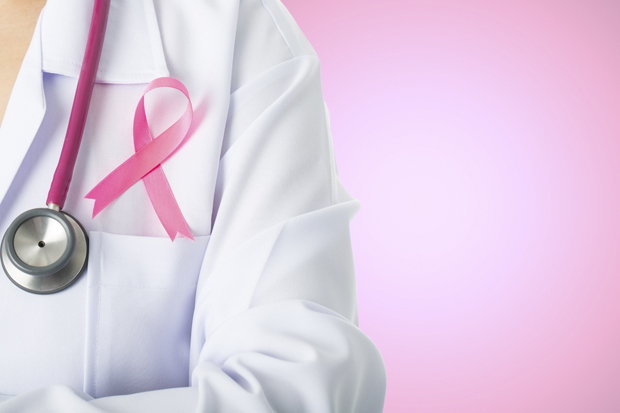
By Lisa Lowry MSN, RN, Breast Health Navigator at the Community Cancer Center
Mixed with the yellow, red, and orange leaves of the beautiful fall season, consumers will be seeing pink. You won’t be able to miss all the pink merchandise on the store shelves this October as part of Breast Cancer Awareness Month. While the recognition and marketing of the pink ribbon has been very successful in raising awareness of breast cancer, as a breast health navigator, I have to question if the educational message surrounding the month has been lost along the way. So, I ask you these questions:
- Do you know what the early detection methods for breast cancer are?
- If you found a breast lump, would you know what tests might be ordered?
A breast cancer found early has a five-year survival rate of 98 percent. There are three things that women should be doing to find breast cancer early. First of all, women should focus on knowing what is normal for their breasts. This is called breast self-awareness. If any of the following changes are noted, they should be reported to a healthcare provider right away.
- A lump in the breast
- Any change or discharge in the nipple
- Skin swelling or a portion of the skin that has the appearance of an orange peel or is red in color
- Dimpling or puckering of the skin
A second part of the early detection message is to have a breast exam done by your doctor or nurse practitioner. Women ages 20 to 39 should have this done every three years or prior to any mammogram, and women 40 and older should have a yearly exam or prior to any mammogram.
The final piece of the early detection message is a test called a mammogram. A mammogram is an x-ray of the breast that looks for changes that you or the doctor may not be able to feel. Based on recent guideline changes, women should start the mammogram discussion with their physician at the age of 40. At the age of 45, women should have a mammogram every year. Women with mothers or sisters that have had breast cancer need to start mammograms at an earlier age, discussing with their doctor at what age they should start.
As a breast health navigator, I can assist you during the screening process by providing education, emotional support, and other supportive resources. Help from a navigator is available through any part of the breast cancer journey from screening and diagnosis to treatment-related questions.
So, whether you see the pink on the store shelf or you wear your pink ribbon awareness pin, think not only about the thousands of women who are diagnosed with breast cancer each year, but remember the educational message that is part of the awareness month. Take action and get your mammogram scheduled, or take that friend who has been putting her mammogram off. Remember that our best protection is early detection.
The Community Cancer Center offers a variety of supportive and educational groups and programs, free of charge, to help patients and families cope with cancer and its effects. For more information, go to our website at www.cancercenter.org.

